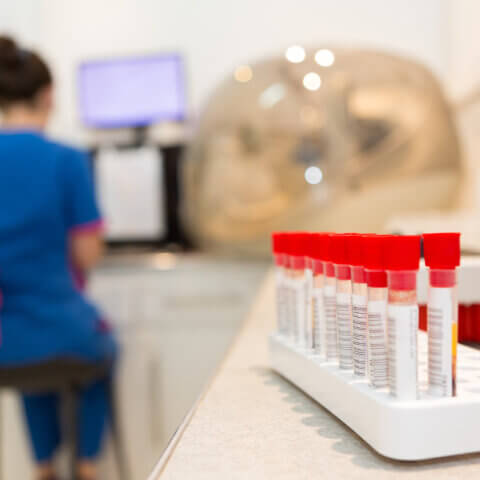Last Updated: September 15, 2025, 3 pm UTC
In vitro diagnostics (IVDs) have become a cornerstone of modern medicine, and rising demand for these critical medical devices has driven rapid market growth. Since 2021, hospitals and laboratories have demonstrated an increasing preference for point-of-care testing devices to get accurate, real-time data. In addition, government organizations, associations, and agencies are encouraging the use of IVDs by launching awareness initiatives. The momentum driving IVD adoption is reflected in the size of the global IVD market, which was valued at $94.67 billion in 2022 and is expected to grow to $157.02 billion by 2030.
North America and Europe comprise the most dominant markets for IVDs. In Europe, rising healthcare expenditures and well-established infrastructures are key drivers for IVD growth. However, implementation of the In Vitro Diagnostic Regulation (IVDR) has created an evolving terrain where many manufacturers continue to face regulatory uncertainty.
In this blog, we explore recent developments in the EU IVD regulatory landscape, with the aim of helping manufacturers navigate the dynamic environment with greater confidence.
Key changes introduced by IVDR
IVDs in the EU were previously regulated under the In Vitro Diagnostic Medical Devices Directive (IVDD). On May 26, 2017, IVDR came into force and introduced several important changes, including:
- Risk-based classification, with risk classes ranging from Class A (low risk) to Class D (high risk). Higher-risk devices require the involvement of a notified body (NB) for conformity assessment.
- Stricter controls for high-risk IVDs via a new pre-market scrutiny mechanism.
- More stringent requirements regarding technical documentation and clinical evidence, with increased level of detail.
- Strengthened post-market surveillance requirements for manufacturers.
- Introduction of Unique Device Identification (UDI system) to enhance traceability.
- Obligations for economic operators to ensure the traceability of devices in the EUDAMED database.

Figure 1. IVDR classification
Increased need for NB involvement, with limitations in NB capacity
Under IVDR, risk is measured in two dimensions: personal risk and public health risk (see Figure 1). According to IVDR risk-based classification rules, it is estimated that 84 percent of IVDs now require involvement of an NB, compared to approximately 7 percent under IVDD. This increase in third party oversight has created a bottleneck due to limitations in NB capacity.
At present, there are 12 NBs designated under IVDR, compared to 22 under IVDD, with an additional 8 applications for NB designation in progress. Beyond the low number of designated NBs, capacity is also limited by challenges such as:
- Increased scrutiny
- New requirements for types of devices that NBs have not handled previously
- Increased training requirements for NB experts
- Poor quality of manufacturer’s applications
- Number of legacy devices that still need to be certified
- Specific challenges related to Class D devices
Securing an agreement with an NB
As of July 2023, the average duration of the conformity assessment process was approximately 18 months. Consequently, manufacturers are encouraged to identify and sign a contract with an appropriate NB as early as possible in their development program since this process can take 3-6 months. When evaluating potential NBs, consider the following:
- Not all NBs can certify all IVDs. Use MDCG 2021-4 to determine the applicable codes for a device and visit the NANDO website to understand the scope of each NB.
- Contact an NB designated to assess the types of devices in your portfolio as early as possible.
- Assess the individual capacity for each NB and ask if they are taking on new business.
Once an appropriate NB has been identified, prepare the application making use of the forms, tools, and guidance available.
Extensions of IVDR transition periods
To address the slow transition to IVDR and prevent shortages of IVD, regulation (EU) 2022/112 introduced extensions of transition periods based on IVD classification. Class A non-sterile devices had to be fully compliant on May 26, 2022. Other classes of devices must convert to IVDR according to a staggered extension timeline:
- Class D devices and devices with a certificate issued by a notified body under IVDD must comply by May 26, 2025.
- Class C devices must comply by May 26, 2026.
- Class B devices and class A sterile devices must comply by May 26, 2027.
To qualify for this extension, manufacturers are required to continue to comply with IVDD, to make no significant changes to the design or intended purpose of the device after the date of IVDR application, and to conform to post-market surveillance, vigilance, and registration of economic operators and devices.
While there are still several years of transitional period remaining for classes C, B and A sterile, the transitional period for class D devices ends on May 26, 2025 and further extension may be needed. Given the low number of certificates and applications for class D IVDs and the long duration of the conformity assessment process, there is a high risk of shortages of many of these devices. Furthermore, it appears that many manufacturers are not sufficiently prepared to demonstrate compliance with IVDR. The causes of this are multifactorial and include the complexity of these new requirements, lack of experience in interacting with NBs, and the continuous development of the IVDR framework.
European Commission actions to support the transition to IVDR
In addition to extending the transition periods, the European Commission has taken other steps to facilitate the transition to IVDR, including:
- Actions to increase the capacity of NBs and the preparedness of manufacturers through issuance of over 100 Medical Device Coordination Group (MDCG) documents and guidance and other supporting tools and training.
- Support for innovation and addressing special needs through pilot programs with expert panels.
- Studies examining the regulatory framework and monitoring the availability of medical devices on the EU market.
- Provision of support to regulatory infrastructure and processes, such as taking joint action on market surveillance and supporting EUDAMED and designated EU reference laboratories.
Conclusion
Despite considerable progress, the transition to IVDR remains slow and significant challenges remain in ensuring sufficient capacity of NBs and readiness of manufacturers to allow IVDs to be certified in a timely, efficient manner. Work is ongoing and the European Commission continues to take measures to support IVDR implementation and to ensure the availability of high-risk IVDs by May 2025.
For manufacturers, bringing an IVD to market in a fast-paced, competitive environment demands more than just innovation. It requires a deep understanding of the complex and evolving regulatory requirements that govern the industry. Success lies in engaging in early discussions with regulatory bodies to lay the groundwork for the clinical evidence necessary for a robust application for conformity assessment. Working closely with regulatory affairs professionals who are experienced in IVDR ensures that an IVD not only meets current standards, but is also poised for potential future changes in a dynamic regulatory landscape.
To learn more about how Premier can help IVD manufacturers navigate the nuances of IVDR, view our on-demand webinar.

 Webinar
Webinar 


 Perspectives Blog
Perspectives Blog 